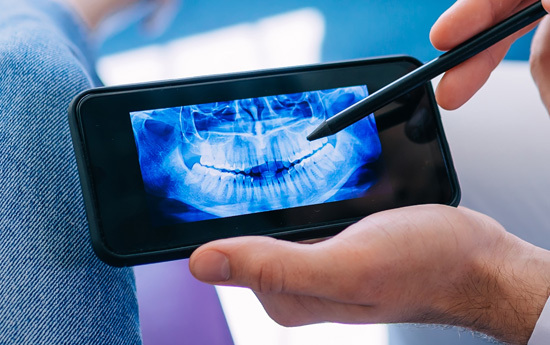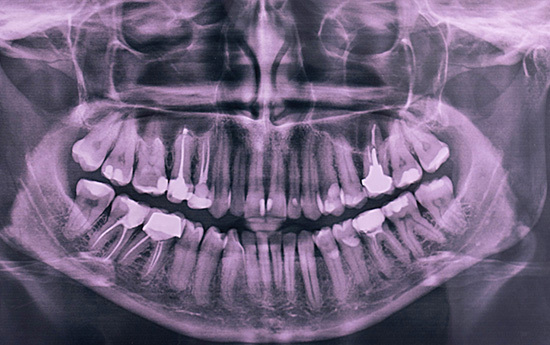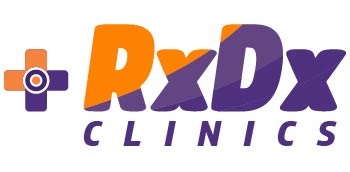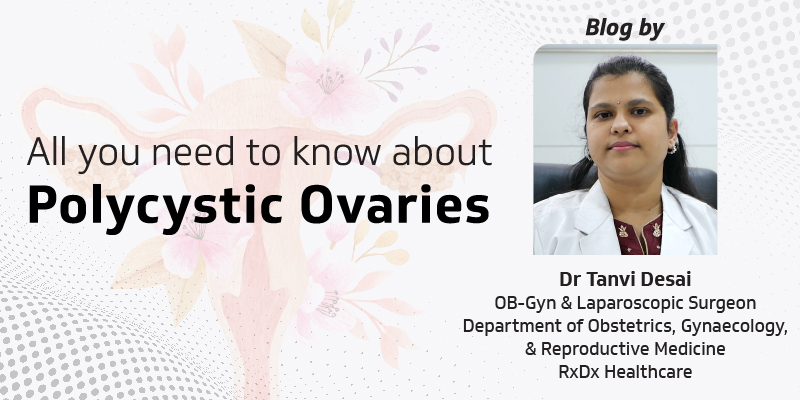OPG
Orthopantomogram

An OPG or orthopantomogram is a panoramic or wide view x-ray of the lower face, which shows all the teeth and supporting structures of the upper and lower jaw on a single film. The doctor can see the number, position and growth of all the teeth even those that have not yet erupted. It is very different from the small x-rays that dentists take of individual teeth. An OPG can also reveal issues with the jawbones and the joint which connects the mandible to the head; the Temporomandibular joint or TMJ. Your dentist may advise for an OPG for the planning of orthodontic treatment, for evaluation of wisdom teeth or for a general overview of the entire dentition and the bone which supports the teeth.

How is OPG taken?
In which conditions, an OPG is recommended by the dentist?
- General evaluation of entire dentition and oral health
- Fracture of tooth or jaw
- Sinusitis, Periodontitis or Periapical abscesses
- Growth/ Tumor or cyst
- Assessment of temporomandibular joint for disease, fracture or dislocation
- Evaluation of facial bone diseases
- Foreign body localization
- Identification of stones in salivary glands (sialolithiasis)
- Monitoring of pediatric dentition for the location, shape and angle of teeth
- Identification of supernumerary teeth and absence of tooth germ to prepare for future aesthetic issues
- Initial and continuous evaluation of orthodontic treatment

What equipment is used during an OPG X-ray?
What are the advantages of an OPG?
- Wide coverage of teeth and facial bones including the TMJ (Temporomandibular joint)
- Quick and efficient procedure
- Ease of examination
- Low radiation dose
- Can be used for patients who have restricted mouth opening
- Useful aid for patient education and case presentation

What are some common uses of an OPG X-ray?
An OPG x-ray can reveal dental and medical problems such as:
- Cysts/ growth in the jawbones
- Bone loss/ advanced periodontal disease
- Oral cancer
- Impacted teeth including wisdom teeth
- Disorders of temporomandibular joint
OPG X-ray at RxDx

Related Insights
Polycystic Ovarian Syndrome
Polycystic Ovary Syndrome PCOS or PCOD PCOS is one of the most common endocrine disorders that affect women. The numbers may go up to lakhs of women...
Will Breastfeeding make my child more intelligent? Find out!
Breastfeeding is the best and most valuable gift a mother can give to her newborn baby. It is an unparallel way of giving ideal food for the healthy growth and development of babies. It is also an important part of the whole reproductive process, which has vital consequences on the health of mothers. Many scientific studies have proved that exclusive breastfeeding for first 6 months is the finest way of feeding infants. After 6 months, infants should be given complementary foods along with breastfeeding up to 2 years of age or beyond.


